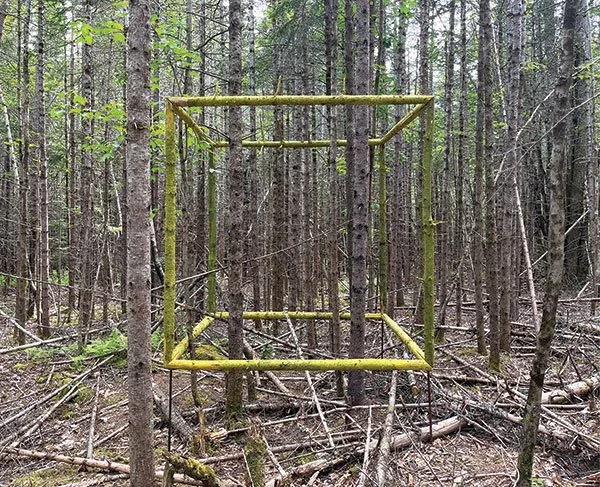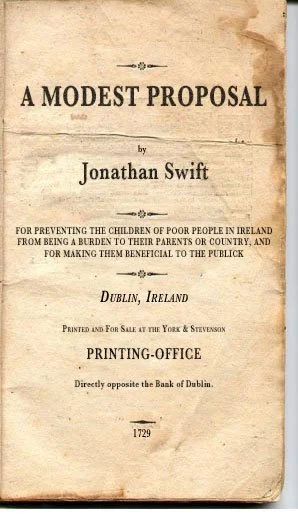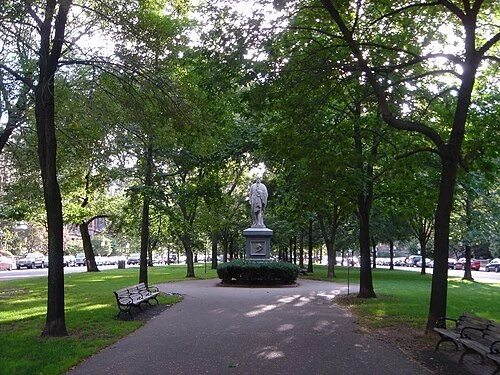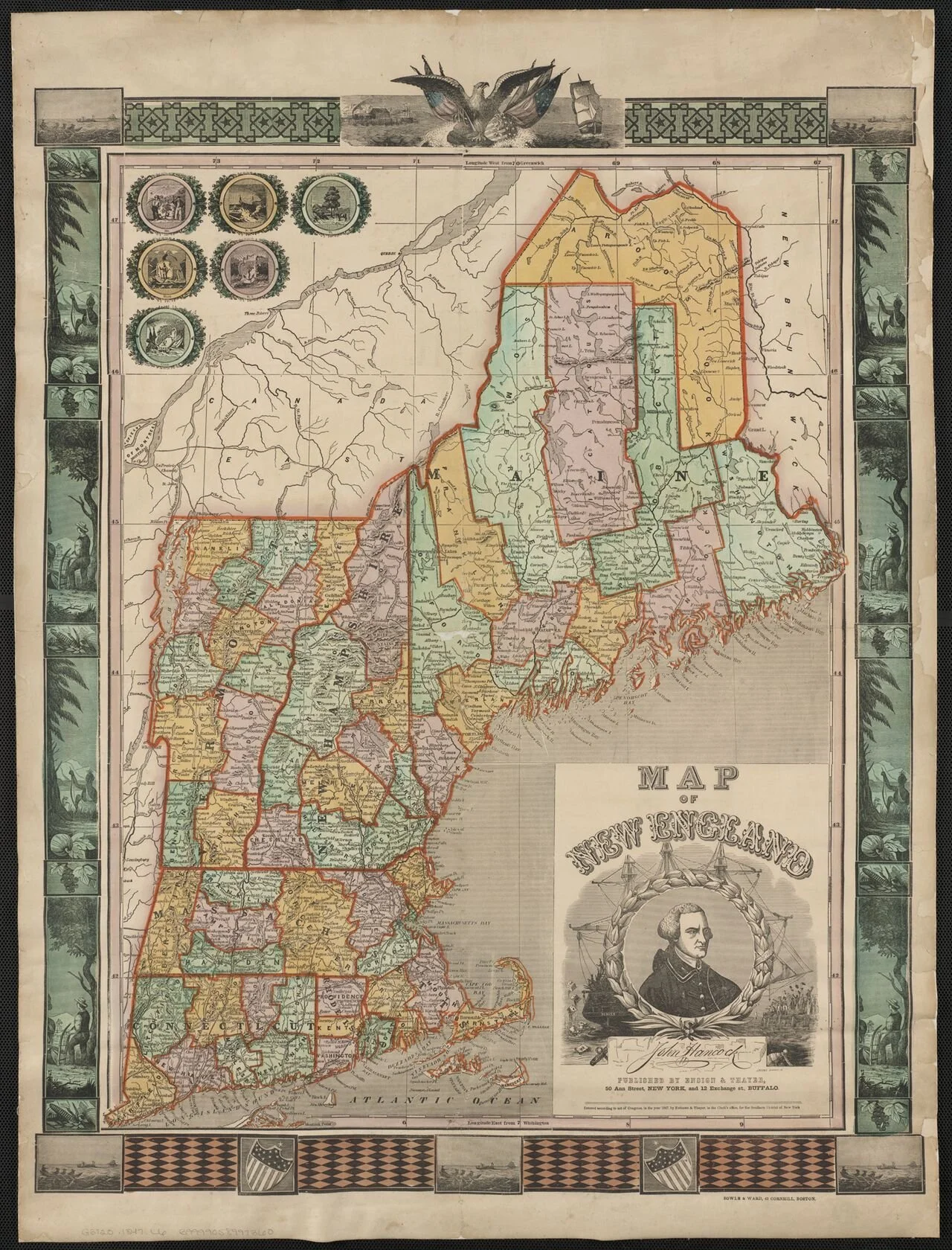
Cubism in Cushing
“Forest Geometries Cube (Earth),’’ by Gina Siepel, at Langlais Art Preserve, Cushing, Maine.
This is a site-specific installation by interdisciplinary artist Siepel on the preserve’s 2.3-mile woodland trail.
Olson House, in Cushing, in 1995
Photo by lcm1863
This description is edited from Wikipedia:
The Olson House was depicted in Andrew Wyeth's famous 1948 painting Christina's World, which was used as Dahlia Gillespie's house in the horror video game series Silent Hill, and inspired the farmer's house in the 1978 film Days of Heaven.
Chris Powell: Why all the hungry children in Conn.?
MANCHESTER, Conn.
Connecticut's summer meals program for children is being treated by state government and news organizations as a sort of triumph. Necessary as it may be, the program is actually a sign of disaster.
The program, operated by the state Education Department, Connecticut Foodshare, the U.S. Agriculture Department, and municipal governments, serves free breakfasts and lunches every day at 600 locations around the state -- schools, parks, and community facilities -- to an estimated 37,000 children 18 and under, no questions asked.
Connecticut News Junkie reports that the program is meant to substitute for the free breakfasts and lunches provided at schools during the school year.
Additionally, during school vacation state government has authorized an extra $36 million in welfare benefits to households with children.
Discussing the program the other day, Lt. Gov. Susan Bysiewicz said, “One in six of our kids are food insecure. The summer months are a strain on family budgets without access to those free meals."
If one out of every six children is “food insecure" -- unable to be fed reliably at home -- that's nearly 17 percent of Connecticut's children. That sounds like poverty approaching depression levels. Even greater poverty is indicated by the estimated 40 percent of births in the state that are being covered by Medicaid, welfare medical insurance. How are people on Medicaid prepared to have children?
The lieutenant governor noted that heavy participation in the free-meals program clashes with Connecticut's image as a wealthy state. Indeed, it should clash enough to prompt an investigation by the General Assembly as to the causes of all this poverty.
Simply appropriating more and more money to ameliorate poverty shouldn't be enough. Why can't so many parents support their children?
Failing to ask about and act against the causes of Connecticut's deepening poverty guarantees that it will get worse still.
* * *
When prisons in Connecticut release inmates, the former offenders aren't necessarily set free. They are usually delivered into poverty. Most never had much in the way of work skills to begin with, many are mentally ill, and few jobs except menial ones are available to unskilled and mentally ill people with prison records.
For 150 years Community Partners in Action, formerly the Connecticut Prison Association, has provided transitional services to former offenders returning to society, helping them find housing, jobs, and mental health and addiction treatment, as well as providing moral support.
The organization operates “re-entry welcome centers" throughout the state, in large part with grants from state government, since rehabilitating and resettling former offenders is really government's obligation -- not just its obligation to the former offenders but its obligation to society generally, which is in danger if former offenders return to crime.
So to help released prisoners achieve a decent life, state government should provide them with a year of basic housing, medical insurance, and a job at minimum wage or better. They could do plenty, if only by collecting roadside litter -- if the state employee unions wouldn't be overcome by jealousy.
But the other week the Connecticut Mirror reported that the new state budget has erased the $1.5 grant that Community Partners in Action was scheduled to receive next year. As a result the organization will curtail accepting new clients.
House Speaker Matt Ritter says the grant was removed to help keep the new state budget within spending limits but legislators hope to revisit the issue in a special session this fall.
How much more hypocritical bleating about the poor will Democratic legislators do before then?
At least one group won't have to worry about its appropriations.
Gov. Ned Lamont recently said that he is confident that his administration will reach agreement with the state employee unions on new contracts. The governor reminded the unions that $100 million for raises already has been budgeted, and the contracts probably will provide raises around 5 percent.
Since next year is a gubernatorial and legislative election year, that $100 million is a lock, and for the moment it could seem as if state employees raises devoured the prisoner re-entry centers and some other more compelling things.
Chris Powell has written about Connecticut government and politics for many years (CPowell@cox.net).
Ian Smith/Lucy Hutyra: To reduce summer heat in Boston and other big cities, think trees and white roofs
The albedo of several types of roofs (lower values means higher temperatures). Albedo means the proportion of the incident light or radiation that’s reflected by a surface.
The famously well-treed Commonwealth Avenue Mall, in Boston’s affluent Back Bay section. Poorer sections in that city tend to have less tree density.
From The Conversation, except for images above.
Ian Smith is a research scientist in Earth & Environment at Boston University
Lucy Hutyra is a prrofessor & chairperson of the Earth and Environment Department at Boston University
Lucy Hutyra has received funding from the U.S. federal government and foundations, including the World Resources Institute and Burroughs Wellcome Fund, for her scholarship on urban climate and mitigation strategies. She was a recipient of a 2023 MacArthur Fellowship for her work in this area.
Ian Smith does not work for, consult, own shares in or receive funding from any company or organization that would benefit from this article, and has disclosed no relevant affiliations beyond their academic appointment.
BOSTON
When summer turns up the heat, cities can start to feel like an oven, as buildings and pavement trap the sun’s warmth and vehicles and air conditioners release more heat into the air.
The temperature in an urban neighborhood with few trees can be more than 10 degrees Fahrenheit (5.5 Celsius) higher than in nearby suburbs. That means air conditioning works harder, straining the electrical grid and leaving communities vulnerable to power outages.
There are some proven steps that cities can take to help cool the air – planting trees that provide shade and moisture, for example, or creating cool roofs that reflect solar energy away from the neighborhood rather than absorbing it.
But do these steps pay off everywhere?
We study heat risk in cities as urban ecologists and have been exploring the impact of tree-planting and reflective roofs in different cities and different neighborhoods across cities. What we’re learning can help cities and homeowners be more targeted in their efforts to beat the heat.
The wonder of trees
Urban trees offer a natural defense against rising temperatures. They cast shade and release water vapor through their leaves, a process akin to human sweating. That cools the surrounding air and reduces afternoon heat.
Adding trees to city streets, parks and residential yards can make a meaningful difference in how hot a neighborhood feels, with blocks that have tree canopies nearly 3 F (1.7 C) cooler than blocks without trees.
Comparing maps of New York’s vegetation and temperature shows the cooling effect of parks and neighborhoods with more trees. In the map on the left, lighter colors are areas with fewer trees. Light areas in the map on the right are hotter. NASA/USGS Landsat
But planting trees isn’t always simple.
In hot, dry cities, trees often require irrigation to survive, which can strain already limited water resources. Trees must survive for decades to grow large enough to provide shade and release enough water vapor to reduce air temperatures.
Annual maintenance costs – about US$900 per tree per year in Boston – can surpass the initial planting investment.
Most challenging of all, dense urban neighborhoods where heat is most intense are often too packed with buildings and roads to grow more trees.
How cool roofs can help on hot days
Another option is “cool roofs.” Coating rooftops with reflective paint or using light-colored materials allows buildings to reflect more sunlight back into the atmosphere rather than absorbing it as heat.
These roofs can lower the temperature inside an apartment building without air conditioning by about 2 to 6 F (1 to 3.3 C), and can cut peak cooling demand by as much as 27% in air-conditioned buildings, one study found. They can also provide immediate relief by reducing outdoor temperatures in densely populated areas. The maintenance costs are also lower than expanding urban forests.
Two workers apply a white coating to the roof of a row home in Philadelphia. AP Photo/Matt Rourke
However, like trees, cool roofs come with limits. Cool roofs work better on flat roofs than sloped roofs with shingles, as flat roofs are often covered by heat-trapping rubber and are exposed to more direct sunlight over the course of an afternoon.
Cities also have a finite number of rooftops that can be retrofitted. And in cities that already have many light-colored roofs, a few more might help lower cooling costs in those buildings, but they won’t do much more for the neighborhood.
By weighing the trade-offs of both strategies, cities can design location-specific plans to beat the heat.
Choosing right mix of cooling solutions
Many cities around the world have taken steps to adapt to extreme heat, with tree planting and cool roof programs that implement reflectivity requirements or incentivize cool roof adoption.
In Detroit, nonprofit organizations have planted more than 166,000 trees since 1989. In Los Angeles, building codes now require new residential roofs to meet specific reflectivity standards.
Workers plant a series of trees at the Coleman Young Community Center in Detroit in 2023. AP Photo/Carlos Osorio
In a recent study, we analyzed Boston’s potential to lower heat in vulnerable neighborhoods across the city. The results demonstrate how a balanced, budget-conscious strategy could deliver significant cooling benefits.
For example, we found that planting trees can cool the air 35% more than installing cool roofs in places where trees can actually be planted.
However, many of the best places for new trees in Boston aren’t in the neighborhoods that need help. In these neighborhoods, we found that reflective roofs were the better choice.
By investing less than 1% of the city’s annual operating budget, about US$34 million, in 2,500 new trees and 3,000 cool roofs targeting the most at-risk areas, we found that Boston could reduce heat exposure for nearly 80,000 residents. The results would reduce summertime afternoon air temperatures by over 1 F (0.6 C) in those neighborhoods.
While that reduction might seem modest, reductions of this magnitude have been found to dramatically reduce heat-related illness and death, increase labor productivity and reduce energy costs associated with building cooling.
Not every city will benefit from the same mix. Boston’s urban landscape includes many flat, black rooftops that reflect only about 12% of sunlight, making cool roofs that reflect over 65% of sunlight an especially effective intervention. Boston also has a relatively moist growing season that supports a thriving urban tree canopy, making both solutions viable.
In places with fewer flat, dark rooftops suitable for cool roof conversion, tree planting may offer more value. Conversely, in cities with little room left for new trees or where extreme heat and drought limit tree survival, cool roofs may be the better bet.
Phoenix, for example, already has many light-colored roofs. Trees might be an option there, but they will require irrigation.
Getting solutions where people need them
Adding shade along sidewalks can do double-duty by giving pedestrians a place to get out of the sun and cooling buildings. In New York City, for example, street trees account for an estimated 25% of the entire urban forest.
Cool roofs can be more difficult for a government to implement because they require working with building owners. That often means cities need to provide incentives. Louisville, Kentucky, for example, offers rebates of up to $2,000 for homeowners who install reflective roofing materials, and up to $5,000 for commercial businesses with flat roofs that use reflective coatings.
In Boston, planting trees, left, and increasing roof reflectivity, right, were both found to be effective ways to cool urban areas. Ian Smith et al. 2025
Efforts like these can help spread cool roof benefits across densely populated neighborhoods that need cooling help most.
As climate change drives more frequent and intense urban heat, cities have powerful tools for lowering the temperature. With some attention to what already exists and what’s feasible, they can find the right budget-conscious strategy that will deliver cooling benefits for everyone.
Seize the day or go back to bed?
“Cape Cod Morning” (oil on canvas), by Edward Hopper (1882-1967), at the Smithsonian Museum of American Art.
“A swarm of bees in May. Is worth a load of hay. A swarm of bees in June. Is worth a silver spoon. A swarm of bees in July. Isn't worth a fly.’’
— Alleged old New England saying
Microscopic Marvels
Work (pencil, ink and encaustic medium) by Cambridge-based artist Katrina Abbott.
She is a member of New England Wax.
She explains:
“Nature, color and climate change inspire my art. By representing the beauty and diversity of the natural world, I hope to inspire viewers to take a closer look at the world around us, and ultimately be more thoughtful and careful stewards of our planet. I bring my background in marine biology and environmental studies and the experience of years spent both on the ocean and in the backcountry to my art. I paint, print and work in wax to represent large and small visions of nature from the earth from space to frogs, cells and diatoms.’’
‘Looking as transformation’
“Medusa #’’ (pigment print, resin, Venetian pigment), by Jennifer Liston Munson, in her sh0w “The Petrifying Gaze,’’ at Kingston Gallery, Boston, Sept. 4-28.
Edited from the gallery’s comments:
‘‘Jennifer Liston Munson’s work embodies the quiet power of close attention and layered seeing. ‘The Petrifying Gaze’ explores the myth of Medusa, resonates with curiosity and contemplation, asking us to linger and to look again….
“Yet it is less the horror than the grace
Which turns the gazer's spirit into stone…”
— Percy Bysshe Shelley, “On the Medusa of Leonardo da Vinci’’
“Munson’s interest in Medusa mythology speaks to contemporary aesthetics that reverse the gaze and honor the liveliness of objects. As a museum professional accustomed to caring for objects, she brings that reverence to her own practice—looking closely, holding space, and honoring the presence of the maker within the object…
“In ‘The Petrifying Gaze,’ translucent forms hold both the gaze and the memory of what they contain, like a pool of water reflecting back layered realities. This translucency fosters ambiguity and mystery, encouraging multiple understandings of what an object, a space, or an idea can be. It is an invitation to embrace the uncertain, to allow the vagueness that asks us to look deeper….
“In Munson’s words and practice, the image of the object becomes an object again—quietly, insistently, reminding us that looking can be an act of transformation.’’
Should such places be for-profit?
Gabriel House before the fire.
— Fall River Tax Assessor Office photo
Taken from Robert Whitcomb’s “Digital Diary,’’ in GoLocal24.com
The horrific fire in Gabriel House, the assisted-living place for elderly people in Fall River, an inferno that killed 10 residents and has left 29 injured, raises the question of how much local, state and federal oversight there is over such places serving low-income people. Especially given the rapid increase in America’s elderly population, we must address this.
It seems that some of Gabriel House’s residents would more properly have been in nursing homes, which are more tightly regulated than assisted-living establishments. And there have been complaints about very substandard conditions at the building.
Gabriel House is owned by Gabriel Care, a corporation controlled by Dennis Etzkorn, who owns some health-care facilities in Massachusetts and is listed as an officer in numerous corporations registered in that state. He has had his share of legal controversies. How much of a role, if any, did the drive to maximize profit cause conditions that helped lead to the fire?
William Morgan: Sensing the soul of winter
The search for New England postcards recently produced this scene of a snowed-in village from a bin in the Red Chair shop in Hudson, N.Y. The Red Chair specializes in French antiques, linens, glassware and silver. But this undramatic townscape curiously appeared amidst a box of slightly naughty belle époque cards.
In the Red Chair
— Photo by William Morgan
This could be any town in northern New England, back when we had more major snowfalls than we do now. The giveaway that it might be farther north is the church, clearly not your wooden white Congregational meeting house, and so my guess was northern, francophone Maine. There was no legend on the back side, just a cryptic identification in pencil: “Canada’’.
The picture that this postcard evoked for me was the opening image in a slide presentation by the brilliant Canadian architect Peter Rose. He was one of three noted designers invited to interview at the Speed Museum, a limited competition to see who might to chosen to craft a master plan for the Louisville art museum. The other two were Robert Venturi, the guru of Post Modernism, and his opposite, the neo-Corbusian “white” architect, Charles Gwathmey. Both the rumpled Philadelphian and the super-slick New Yorker spoke about their work, that is, mostly themselves. The Montreal native showed several pictures of his native city and the Quebec landscape blanketed in snow.
Rose, who gave up a spot on the Canadian Olympic ski team to go to Yale’s architecture school, described how a downhill racer has to read the snow, “experiencing and understanding space and materials – snow, ice and trees, effects of light and contour–while hurtling through space as fast as possible.” Buildings, too, Rose noted, are experienced through motion as well; successfully reading topography, he declared, played an important part in his role as a designer.
Peter Rose in a private house in Manhattan in 2008.
—Photo by William Morgan
As Rose spoke of suns low in the sky and ice-covered farms and streets, one of the members of the Speed selection committee whispered to me that he did not understand why the talk of winter. While Rose prevailed over his more famous competitors in Louisville, that misunderstanding of the quiet yet passionate soul of America’s northern neighbor was sadly typical.
Providence-based architectural critic and historian William Morgan has written a number of books that deal with architecture in northern climes, including Snowbound: Dwelling in Winter and Peter Rose: Houses.
His recent books include Academia — Collegiate Gothic Architecture in the United States and his updated edition of The Cape Cod Cottage.
Too scared to open it?
“Letter from Karl”(1940) (oil on canvas), by Gertrude Abercrombie (1909-1977), in the show “Gertrude Abercrombie: The Whole World Is a Mystery,’’ at the Colby College Museum of Art, Waterville, Maine, through Jan. 1, 2026.
The curator says:
The show is the first nationally touring presentation of Abercrombie’s art, celebrating “an artist who has been historically marginalized. Abercrombie (1909–1977) was a critical figure in the mid-20th Century Chicago art and jazz scenes. Though she had a singular vision, her reliance on her inner consciousness and use of a fantastical style connected her to broader developments in American Modernism.’’
Honoring a musical pioneer
Lowell Mason
Lowell Mason House, in Medfield, Mass.
This is an edited version of a press release
MEDFIELD, Mass.
Following years of historic-house restoration and national fundraising campaigns, the birthplace of one of America’s most influential musical figures will soon be transformed into a space for music education in Medfield. The plan is for it to open in 2027.
Lowell Mason (1792-1872) was responsible for introducing music as a subject to be taught in public schools at a time when this was unheard of. Mason famously said: “Children should be taught music as they are taught to read.” He paid from his own funds for the first-year trial program in Boston schools in 1836, and when this became a great success, other schools followed suit.
Mason also composed and arranged thousands of popular hymns, including “Joy to the World" and “Nearer My God to Thee,’’ as well as publishing many of America’s earliest hymn books and musical instruction manuals.
In 2011, Mason’s birthplace was saved from being razed by the concerned citizens of Medfield. The Lowell Mason House foundation was formed, and the house was moved nearby in Medfield and preserved to become a public place for music-making and musical education. This effort is now close to being accomplished, with multiple practice rooms, a library and the acquisition of the last Mason and Hamlin grand piano made under Mason family ownership all coming together.
“This has become a labor of love not only for local residents but also for those affiliated with music education advocacy at the state and national levels,” says Thomas Reynolds, executive director of the Lowell Mason House.
“We are now embarking upon the Lowell Mason House ‘Fund-to-the-Finish’ campaign with the goal of opening the center to the public in 2027. We encourage all those who love music and value music education for children and adults to visit the Lowell Mason House website to learn more and to consider supporting our final push to completion.”
The Lowell Mason House foundation is excited to be working this summer in an advisory capacity with a class that is a part of the Boston University Arts Administration Graduate Program. The class will be researching potential individual and corporate/foundation prospects as well as advising on the Lowell Mason House fundraising plan.
“In working together, we hope to help the leadership of the Lowell Mason House advance its fundraising efforts and demonstrate to students the opportunities and challenges experienced by nonprofit leaders in raising funds,” says Mary Doorley-Simboski, an ACFRE (Advanced Certified Fund Raising Executive) and faculty member conducting the class.
The board of the Lowell Mason House is eager to receive input from Ms. Doorley-Simboski and her class. “Small volunteer non-profits, such as ours, do not have the resources to hire a staff of professionals, so the opportunity to have a group of people passionate about arts and arts administration to assist us with this effort is fantastic,” says Reynolds.
This summer has been particularly important for the Lowell Mason House as another unique opportunity has presented itself to the group. A direct descendent of Lowell Mason, Will Mason, currently an associate professor of music at Wheaton College, in Norton, Mass., will be taking a new position as associate professor of music at Skidmore College, in Saratoga Springs, N.Y. Professor Mason contacted us because he owns the Mason Family piano and is willing to part with it.
This grand piano was manufactured by Mason & Hamlin in 1929 while under family ownership and made for Henry Mason, Lowell Mason’s grandson. Mason family friends Sergei Rachmaninoff, a famous Russian composer, conductor and pianist, and French composer Maurice Ravel were both huge advocates of Mason & Hamlin pianos, specifically requesting them when planning solo performances.
“The opportunity to acquire the Mason Family piano at this time, adding it to our collection of Lowell Mason handwritten music and other personal items, is incredibly timely as we make our final fundraising push,” says Reynolds.
Information about the Lowell Mason House and its “Fund-to-the-Finish” campaign can be found at this link.
A tune from Mason's Handbook for the Boston Academy of Music.
Moonstruck
“Mito de luz de luna (Moonlight Myth)’’ (oil on canvas), by Carlos Almaraz (1941-1989), in the group show “The Body Imagined,’’ at the Mattatuck Museum, Waterbury, Conn., through Sept. 28.
The museum says the show “offers a unique lens on how the human figure has been depicted, reimagined, and transformed across generations and artistic movements.’’
Elisabeth Rosenthal: Despite ‘No Surprises Act,’ surprise medical bills show up to dismay patients
Except for picture above, from Kaiser Family Foundation Health News
Last year in Massachusetts, after finding lumps in her breast, Jessica Chen went to Lowell General Hospital-Saints Campus, part of Tufts Medicine, for a mammogram and sonogram. Before the screenings, she asked the hospital for the estimated patient responsibility for the bill using her insurance, Tufts Health Plan. Her portion, she was told, would be $359 — and she paid it. She was more than a little surprised weeks later to receive a bill asking her to pay an additional $1,677.51. “I was already trying to stomach $359, and this was many times higher,” Chen, a physician assistant, told me.
The No Surprises Act, which took effect in 2022, was rightly heralded as a landmark piece of legislation, which “protects people covered under group and individual health plans from receiving surprise medical bills,” according to the Centers for Medicare & Medicaid Services. And yet bills that take patients like Chen by surprise just keep coming.
With the help of her software-wise boyfriend, she found the complicated “machine-readable” master price list that hospitals are required to post online and looked up the negotiated rate between Lowell General and her insurer. It was $302.56 — less than she had paid out-of-pocket.
CMS is charged with enforcing the law, so Chen sent a complaint about the surprising bill to the agency. She received a terse email in return: “We have reviewed your complaint and have determined that the rights and protections of the No Surprises Act do not apply.”
When I asked the health system to explain how such a surprising off-estimate bill could be generated, Tufts Medicine spokesperson Jeremy Lechan responded by email: “Healthcare billing is complex and includes various factors and data points, so actual charges for care provided may differ from initial estimates. We understand the frustration these discrepancies can cause.”
Here’s the problem: While the No Surprises Act has been a phenomenal success in taking on some unfair practices in the wild West of medical billing, it was hardly a panacea.
In fact, the measure protected patients primarily from only one particularly egregious type of surprise bill that had become increasingly common before the law’s enactment: When patients unknowingly got out-of-network care at an in-network facility, or when they had no choice but to get out-of-network care in an emergency. In either case, before President Donald Trump signed the law late in his first term, patients could be hit with tens or hundreds of thousands of dollars in out-of-network bills that their insurance wouldn’t pay.
The No Surprises Act also provided some protection from above-estimate bills, but at the moment, the protection is only for uninsured and self-pay patients, so it wouldn’t apply in Chen’s case since she was using health insurance.
But patients who do qualify generally are entitled to an up-front, good-faith estimate for treatment they schedule at least three business days in advance or if they request one. Patients can dispute a bill if it is more than $400 over the estimate. (The No Surprises Act also required what amounted to a good-faith estimate of out-of-pocket costs for patients with insurance, but that provision has not been implemented, since, nearly five years later, the government still has not issued rules about exactly what form it should take.)
So, surprising medical bills — bills that the patient could not have anticipated and never consented to — are still stunning countless Americans.
Jessica Robbins, who works in product development in Chicago, was certainly surprised when, out of the blue, she was recently billed $3,300 by Endeavor Health for a breast MRI she had received two years earlier, with prior authorization from her then-insurer, Blue Cross and Blue Shield of Illinois. In trying to resolve the problem, she found herself caught in a Kafkaesque circle involving dozens of calls and emails. The clinic where she had the procedure no longer existed, having been bought by Endeavor. And she no longer had Blue Cross.
“We are actively working with the patient and their insurer to resolve this matter,” Endeavor spokesperson Allie Burke said in an emailed response to my questions.
Mary Ann Bonita of Fresno, California, was starting school this year to become a nursing assistant when, on a Friday, she received a positive skin test for tuberculosis. Her school’s administration said she couldn’t return to class until she had a negative chest X-ray. When her doctor from Kaiser Permanente didn’t answer requests to order the test for several days, Bonita went to an emergency room and paid $595 up front for the X-ray, which showed no TB. So she and her husband were surprised to receive another bill, for $1,039, a month later, “with no explanation of what it was for,” said Joel Pickford, Bonita’s husband.
In the cases above, each patient questioned an expensive, unexpected medical charge that came as a shock — only to find that the No Surprises Act didn’t apply.
“There are many billing problems out there that are surprising but are not technically surprise bills,” Zack Cooper, an associate professor of economics at Yale University, told me. The No Surprises Act fixed a specific kind of charge, he said, “and that’s great. But, of course, we need to address others.”
Cooper’s research has found that before the No Surprises Act was passed, more than 25% of emergency room visits yielded a surprise out-of-network bill.
CMS’s official No Surprises Help Desk has received tens of thousands of complaints, which it investigates, said Catherine Howden, a CMS spokesperson. “While some billing practices, such as delayed bills, are not currently regulated” by the No Surprises Act, Howden said, complaint trends nonetheless help “inform potential areas for future improvements.” And they are needed.
Michelle Rodio, a teacher in Lakewood, Ohio, had a lingering cough weeks after a bout of pneumonia that required treatment with a course of antibiotics. She went to Cleveland Clinic’s Lakewood Family Health Center for an examination. Her X-ray was fine. As was her nasal swab — except for the stunning $2,700 bill it generated.
“I said, ‘This is a surprise bill!’” Rodio recalled telling the provider’s finance office. The agent said it was not.
“So I said, ‘Next time I’ll be sure to ask the doctor for an estimate when I get a nose swab.’”
“The doctors wouldn’t know that,” the agent replied, as Rodio recalled — and indeed physicians generally have no idea how much the tests they order will cost. And in any case, Rodio was not legally entitled to a binding estimate, since the part of the No Surprises Act that grants patients with insurance that right has not been implemented yet.
So she was stuck with a bill of $471 (the patient responsibility portion of the $2,700 charge) that she couldn’t have consented to (or rejected) in advance. It was surprising — shocking to her, even — but not a “surprise bill,” according to the current law. But shouldn’t it be?
Elisabeth Rosenthal is a reporter at Kaiser Family Foundation Health News.
‘The mirror we are in’
“September Light,’’ by Susan Lirakis, in her show “Past and Future Memory,’’ at AVA Gallery and Art Center, Lebanon, N.H., through Aug 9.
The gallery says:
“Susan Lirakis elevates ordinary moments with a sense of reverence. She presents her photographic images using various techniques, including gelatin silver prints, cyanotypes, pigment prints, and some adorned with gold or silver leafing…. Several images incorporate a mirror in the camera, allowing us to look forward while simultaneously reflecting backward, capturing a sense of being in the present moment. Does this dual perspective change our view of the present or how we perceive time? Does it illustrate how the past influences our understanding of the present and our outlook on the future? The use of blurred and interpretive imagery prompts us to contemplate the kind of mirror we are in this context.’’
Chris Powell: Does Trump’s budget doom Conn.?
“Four Horsemen of The Apocalypse” (woodcut print), by Albrecht Dürer (1461-1529)
MANCHESTER, Conn.
According to Connecticut Gov. Ned Lamont, the federal budget just enacted by the Republican majority in Congress and President Trump is nearly the end of the world.
The governor says the budget will have “devastating impact on millions of Americans for years to come and was passed for the sole purpose of giving tax cuts to millionaires and billionaires. It will amount to a massive income transfer from the poorest and most vulnerable Americans to the wealthiest."
But Dan Haar of the Hearst Connecticut newspapers reports that, by quadrupling to $40,000 the federal income tax deductibility of state and local taxes -- the “SALT" deduction, which Democratic leaders in Connecticut and other high-tax states long have supported -- the new budget will substantially reduce federal income taxes for hundreds of thousands of middle- and upper-middle class Connecticut households.
As for the “massive income transfer from the poorest and most vulnerable Americans to the wealthiest," the poor don't pay federal income taxes, nor, in Connecticut, state income taxes. The “income" for the poor about which the governor is worried is actually what in a less politically correct era was called welfare.
The governor says the new budget will “bankrupt" the federal government by running a deficit in the trillions of dollars, requiring borrowing to cover the gap. But the federal government has long run huge deficits under Democratic administrations as well, which never bothered Democrats in Connecticut. Besides, since the government can create money out of nothing, it can never go bankrupt; it can only continue to devalue the dollar -- something else that has never bothered Connecticut Democrats.
The new budget, the governor says, “slashes critical safety-net programs, particularly Medicaid and SNAP" -- food subsidies -- "that so many hard-working American families need for their health and survival."
Yet in recent days there have been reports from all around the country about massive fraud in the Medicaid, Medicare, and SNAP programs -- some involving providers in Connecticut.
Indeed, a few months ago the governor's own public health and social services commissioner retired after it was disclosed that she had countenanced the termination of an audit of Medicaid fraud in which the governor's former deputy budget director and a former Democratic state representative have been indicted and a Bristol doctor has pleaded guilty.
Just the other week state prosecutors charged an acupuncturist from Milford with defrauding Medicaid of $123,000.
All this fraud doesn't mean that the Republican administration in Washington or the Democratic administration in Connecticut will be competent and determined enough to substantially reduce fraud in Medicaid, Medicare and food subsidies. But maybe a reduction in those appropriations is necessary to provide some incentive to look harder.
“With a federal administration insistent on eliminating critical safety nets," the governor said, “it is going to be nearly impossible for any state to backfill the billions in federal cuts we are going to face. … We will be meeting with our colleagues in the General Assembly to discuss next steps."
Those next steps may be interesting.
Will the federal cuts in Medicaid and food subsidies be so compelling as to cause the governor and legislators to cancel any of the grants they grandly announce practically every week for all sorts of inessential projects around the state?
Will the cuts be so compelling as to cause the governor to reconsider the blank check his administration has issued for illegal immigration?
Will the cuts be so compelling as to cause the governor to reconsider the pledge he made to the state employee unions in April? “Every year that I've been here you've gotten a raise," he told the unions, “and every year I'm here, you're going to get a raise."
Raises despite the cuts in the safety net? Despite natural disasters? Despite plague? Despite nuclear war?
Or will the cuts prompt the governor to call the legislature into special session, proclaim that state government simply can't economize, and propose to raise taxes going into an election year?
Chris Powell has written about Connecticut government and politics for many years (CPowell@cox.net).
Llewellyn King: How crowdfunding brought a new wind technology to market
WEST WARWICK, R.I.
A California company, Wind Harvest, is in high gear to change the dynamics of wind energy and to vastly improve the economics of wind farms.
But the company wouldn’t be marketing to large energy users and wind farm operators today if it hadn’t used crowdfunding for its recent rounds of financing. Crowdfunding can get a startup over the hill.
Kevin Wolf, Wind Harvest co-founder and CEO, explained that developers of hardware face a double problem when it comes to financing: The banks won’t finance their customers’ projects until the technology has been certified and, in Wind Harvest’s case, dozens of their unique wind turbines have been operating for at least a year which requires money.
Wolf said, “It takes about two years to complete a ‘technology readiness level,’ unless a company is well-funded. Six months to have all the components arrive, six months to a year to install and fully test the prototype, and then another six months to complete the new design.” Meantime, a team of engineers and the bills have to be paid.
Venture capitalists have shown a decided disinclination to finance hardware, preferring computer-related software products, he said.
But with crowdfunding, often through a special-purpose company, thousands of individuals have become venture capitalists in companies like Wind Harvest. Many of those investors have hit it big.
Two standout companies which grew into multi-billion dollar ones: Oculus VR and Peloton.
Oculus, the virtual-reality technology company, used crowdfunding to raise $250,000 in 2012. Two years later, it was acquired by Facebook for $2 billion.
Peloton, the fitness company, started with crowdfunding of $307,000, achieved a valuation of $8.1 billion its initial public offering, and rose to astronomically high valuations during the Covid pandemic. It has now fallen back considerably, after many difficulties in the fitness industry.
Wind Harvest is essentially offering new infrastructure which, should it catch on, would give it a steady and fairly predictable path forward as both a wind turbine Original Equipment Manufacturer and as a renewable energy project developer.
The company’s product, trademarked as Wind Harvester, is a vertical-axis wind turbine (VAWT): The drive shaft and the electrical generator are aligned vertical to the ground. In traditional wind turbines, those components are horizontal to the ground.
The most famous vertical-axis wind turbine is the Darrieus, named after a French engineer who patented it in 1926. It has an elegant, eggbeater shape almost like a fine outdoor sculpture. But it ran into problems with vibration and other technical drawbacks and wasn’t a commercial success.
At the outset of the 1973-1974 energy crisis, in 1973, Sandia National Laboratory in New Mexico, one of the jewels in the crown of the national laboratory system, did considerable theoretical work on wind turbines, concentrating on vertical-axis designs. But when the research was moved to another laboratory, the horizontal-axis wind turbine (HAWT) became the focus.
The codes developed at Sandia are foundational to the Wind Harvest design. Wolf explained that the choice between VAWTs and HAWTs isn’t an either-or choice, except where wind shears are high and wind near the ground slows down. Then tall, horizontal-axis wind turbines have the advantage.
Wind Harvest turbines are designed to capture the wind on ridgelines, hills and mountain passes where wind funnels and accelerates turbines under the tall horizontal-axis turbines. VAWTs can take advantage of the powerful wind that swirls around near the ground. This turbulent wind at the surface is an unused resource now.
With the bottom of their blades between 25 feet and 50 feet off the ground and installed in pairs 3 feet apart from each, Wind Harvest turbines can double the output of electricity from a wind farm while still leaving enough clearance for agriculture, whether it is grazing animals or growing crops. So, add efficiency to the virtues of these turbines: better use of the wind resources, land and infrastructure.
Thanks to crowdfunding in four tranches, Wind Harvest is now ready to go to market with utility scale installations.
Wolf listed these additional virtues for VAWTs:
They can be entirely made in America. Right now their blades are extruded by Step-G in Germany.
They are designed to withstand the 180 mph wind gusts from a Category 5 hurricane.
Because they are short, they can use larger permanent magnet generators (PMGs) not made of rare earth magnets. For example, their PMGs can use ferrite magnets which are iron-based.
Wind Harvest installations have a fatigue life of 75 years with maintenance and periodic refurbishment. Most turbines now in use must be replaced after about 25 years.
The first Wind Harvesters to be put into service are planned for a dredge-spoil-created peninsula on St. Croix, the largest of the U.S. Virgin Islands, in the Caribbean Sea. The entire output of the first phase of the project will be bought by the oil refinery adjacent to the project site and replace the burning of costly propane for generation.
Big ideas now have funding sources besides “Shark Tank,” venture capital and the banks.
On X: @llewellynking2
Bluesky: @llewellynking.bsky.social
Subscribe to Llewellyn King's File on Substack
Llewellyn King is executive producer and host of White House Chronicle, on PBS. He’s based in Rhode Island.
Plant Kingdom
“A Prickly Situation” (archival chromagenic pigment print), by Bob Stegmaier, in the group show “Flora,’’ at the Arts League of Lowell, through Sept. 7.
—Image courtesy of the Arts League of Lowell.
The curator explains:
The exhibition features the works of 45 artists, “shining a light on all types of flora. There is no end to how artists can interpret and depict the natural world. Some, like Bob Stegmaier, use photography and specific printing techniques to create interesting compositions, while others like Mary Hart and her sculptural piece “Flourish" (mixed recycled board and materials) take a more abstract and interpretive approach.’’
Looking back can be dangerous
‘‘the shape of memory’’ (installation image), by Carlie Trosclair, at the Maine Center for Contemporary Art, Rockland. through Sept. 7.
—Photo by Dave Clough
Michael J. Socolow: Will networks let autocratic Trump become their editor?
Michael J. Socolow is a professor of communication and journalism at the University of Maine.
His father, Sanford Socolow, worked for CBS News from 1956 to 1988.
ORONO, Maine
It was a surrender widely foreseen. For months, rumors abounded that Paramount would eventually settle the seemingly frivolous lawsuit brought by President Trump concerning editorial decisions in the production of a CBS interview with Democratic presidential nominee Kamala Harris in 2024.
On July 2, 2025, those rumors proved true: The settlement between Paramount and Trump’s legal team resulted in CBS’s parent company agreeing to pay $16 million to the future Donald Trump Library – the $16 million included Trump’s legal fees – in exchange for ending the lawsuit. Despite the opinion of many media law scholars and practicing attorneys who considered the lawsuit meritless, Shari Redstone, the largest shareholder of Paramount, yielded to Trump.
Redstone had been trying to sell Paramount to Skydance Media since July 2024, but the transaction was delayed by issues involving government approval.
Specifically, when the second Trump administration assumed power, on Jan. 20 2025, the new Federal Communications Commission had no legal obligation to facilitate, without scrutiny, the transfer of the CBS network’s broadcast licenses for its owned-and-operated TV stations to new ownership.
The FCC, under newly installed Republican Chairman Brendan Carr, was fully aware of the issues in the legal conflict between Trump and CBS at the time Paramount needed FCC approval for the license transfers. Without a settlement, the Paramount-Skydance deal remained in jeopardy.
Until it wasn’t.
At that point, Paramount joined Disney in implicitly apologizing for journalism produced by their TV news divisions.
Earlier in 2025, Disney had settled a different Trump lawsuit with ABC News in exchange for a $15 million donation to the future Trump Library. That lawsuit involved a dispute over the wording of the actions for which Trump was found liable in a civil lawsuit brought by E. Jean Carroll.
GOP presidential nominee Donald Trump said the CBS interview with Democratic nominee Kamala Harris was ‘‘fraudulent interference with an election.’’
It’s not certain what the ABC and CBS settlements portend, but many are predicting they will produce a “chilling effect” within the network news divisions. Such an outcome would arise from fear of new litigation, and it would install a form of internal self-censorship that would influence network journalists when deciding whether the pursuit of investigative stories involving the Trump administration would be worth the risk.
Trump has apparently succeeded where earlier presidents failed.
Presidential pressure
From Jimmy Carter trying to get CBS anchor Walter Cronkite to stop ending his evening newscasts with the number of days American hostages were being held in Iran to Richard Nixon’s administration threatening the broadcast licenses of The Washington Post’s TV stations to weaken Watergate reporting, previous presidents sought to apply editorial pressure on broadcast journalists.
But in the cases of Carter and Nixon, it didn’t work. The broadcast networks’ focus on both Watergate and the Iran hostage crisis remained unrelenting.
Nor were Nixon and Carter the first presidents seeking to influence, and possibly control, network news.
President Lyndon Johnson, who owned local TV and radio stations in Austin, Texas, regularly complained to his old friend, CBS President Frank Stanton, about what he perceived as biased TV coverage. Johnson was so furious with the CBS and NBC reporting from Vietnam, he once argued that their newscasts seemed “controlled by the Vietcong.”
Yet none of these earlier presidents won millions from the corporations that aired ethical news reporting in the public interest.
Before Trump, these conflicts mostly occurred backstage and informally, allowing the broadcasters to sidestep the damage to their credibility should any surrender to White House administrations be made public. In a “Reporter’s Notebook” on the CBS Evening News the night of the Trump settlement, anchor John Dickerson summarized the new dilemma succinctly: “Can you hold power to account when you’ve paid it millions? Can an audience trust you when it thinks you’ve traded away that trust?”
“The audience will decide that,” Dickerson continued, concluding: “Our job is to show up to honor what we witness on behalf of the people we witness it for.”
During the Iran hostage crisis, CBS News anchor Walter Cronkite ended every broadcast with the number of days the hostages had been held captive.
Holding power to account
There’s an adage in TV news: “You’re only as good as your last show.”
Soon, Skydance Media will assume control over the Paramount properties, and the new CBS will be on the airwaves.
When the licenses for KCBS in Los Angeles, WCBS in New York and the other CBS-owned-and-operated stations are transferred, we’ll learn the long-term legacy of corporate capitulation. But for now, it remains too early to judge tomorrow’s newscasts.
As a scholar of broadcast journalism and a former broadcast journalist, I recommend evaluating programs like 60 Minutes and the CBS Evening News on the record they will compile over the next three years – and the record they compiled over the past 50. The same goes for ABC World News Tonight and other ABC News programs.
A major complicating factor for the Paramount-Skydance deal was the fact that 60 Minutes has, over the past six months, broken major scoops embarrassing to the Trump administration, which led to additional scrutiny by its corporate ownership. Judged by its reporting in the first half of 2025, 60 Minutes has upheld its record of critical and independent reporting in the public interest.
If audience members want to see ethical, independent and professional broadcast journalism that holds power to account, then it’s the audience’s responsibility to tune it in. The only way to learn the consequences of these settlements is by watching future programming rather than dismissing it beforehand.
The journalists working at ABC News and CBS News understand the legacy of their organizations, and they are also aware of how their owners have cast suspicion on the news divisions’ professionalism and credibility. As Dickerson asserted, they plan to “show up” regardless of the stain, and I’d bet they’re more motivated to redeem their reputations than we expect.
I don’t think that reporters, editors and producers plan to let Donald Trump become their editor-in-chief over the next three years. But we’ll only know by watching.
New England’s only lizard
Juvenile Five-Lined Skink
Excerpted from an article by Frank Carini in ecoRI News in his series on threatened New England wildlife
“The five-lined skink is the only lizard found in New England, even though there are about 5,000 different species of lizards worldwide, according to the Connecticut Department of Energy & Environmental Protection….’’
“The small size and fragmented nature of skink populations leaves them vulnerable to ecological catastrophes, according to state officials. It’s listed as a threatened animal in Connecticut.
“The range of this species corresponds closely with the eastern deciduous forest. The Five-Lined Skink is found in southwestern New England — currently, parts of Vermont and Connecticut and historically in Massachusetts — south to northern Florida, west to Wisconsin, and in eastern Kansas, Oklahoma, and Texas. The species is at its northeastern range limit in southwestern New England.’’


























